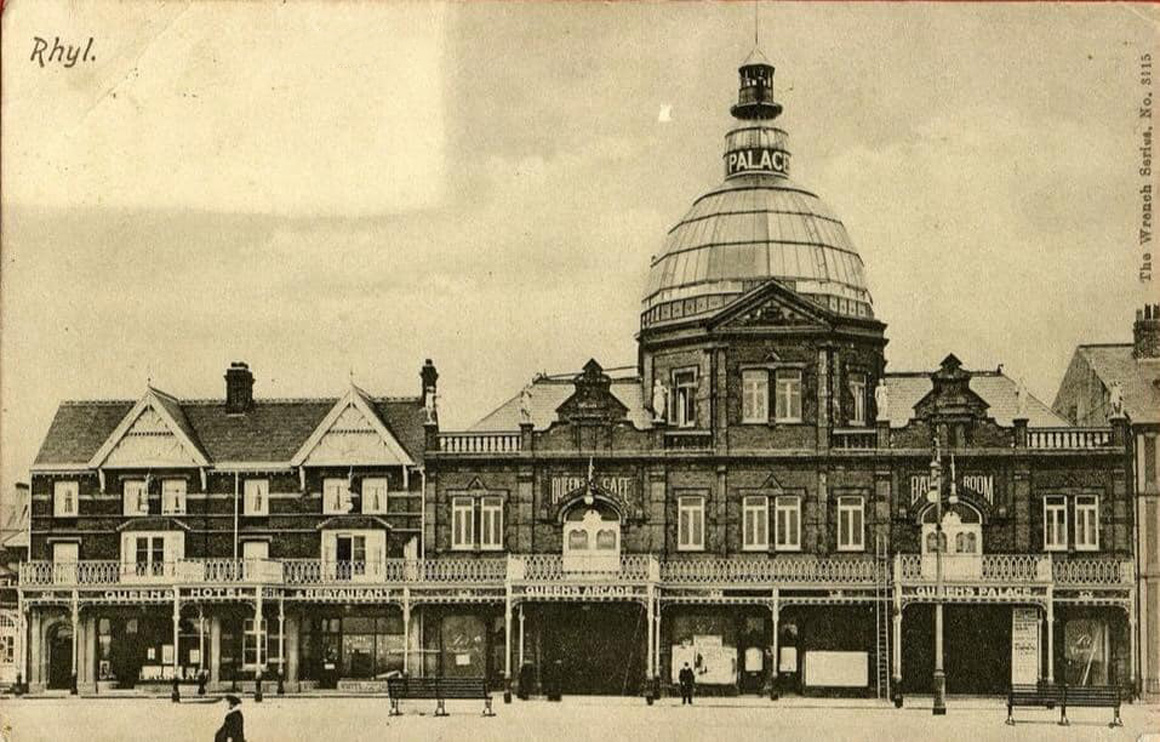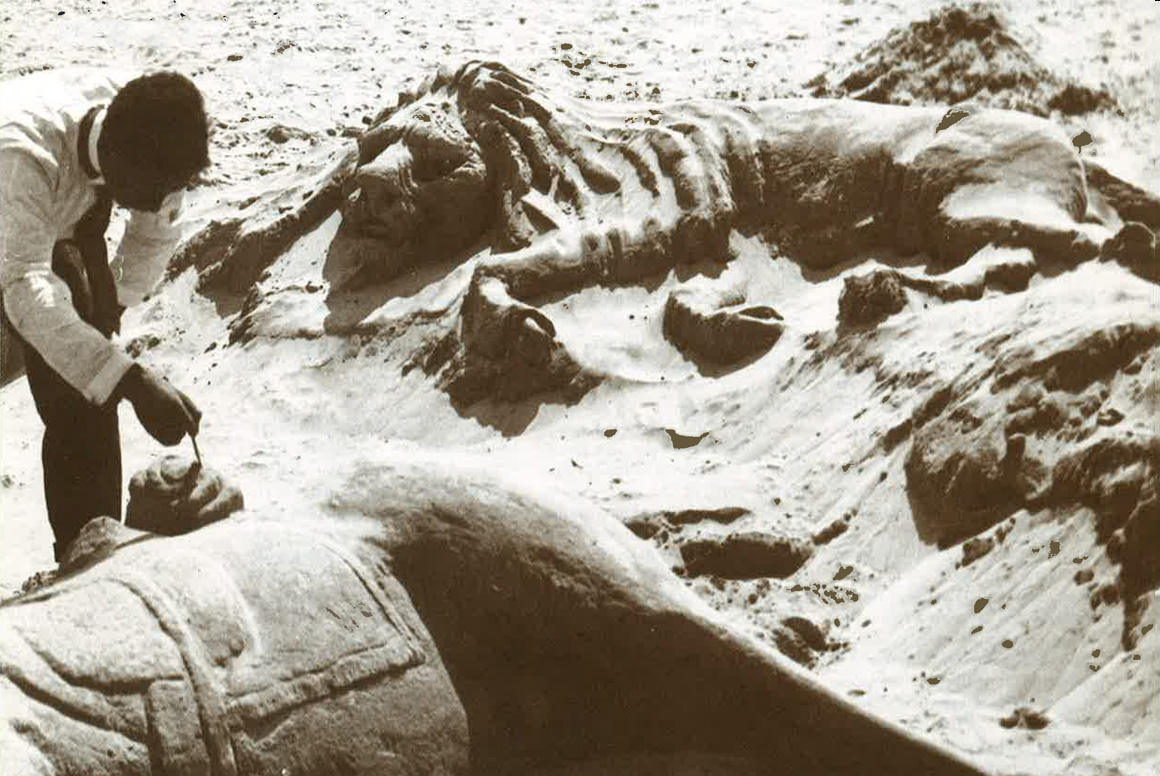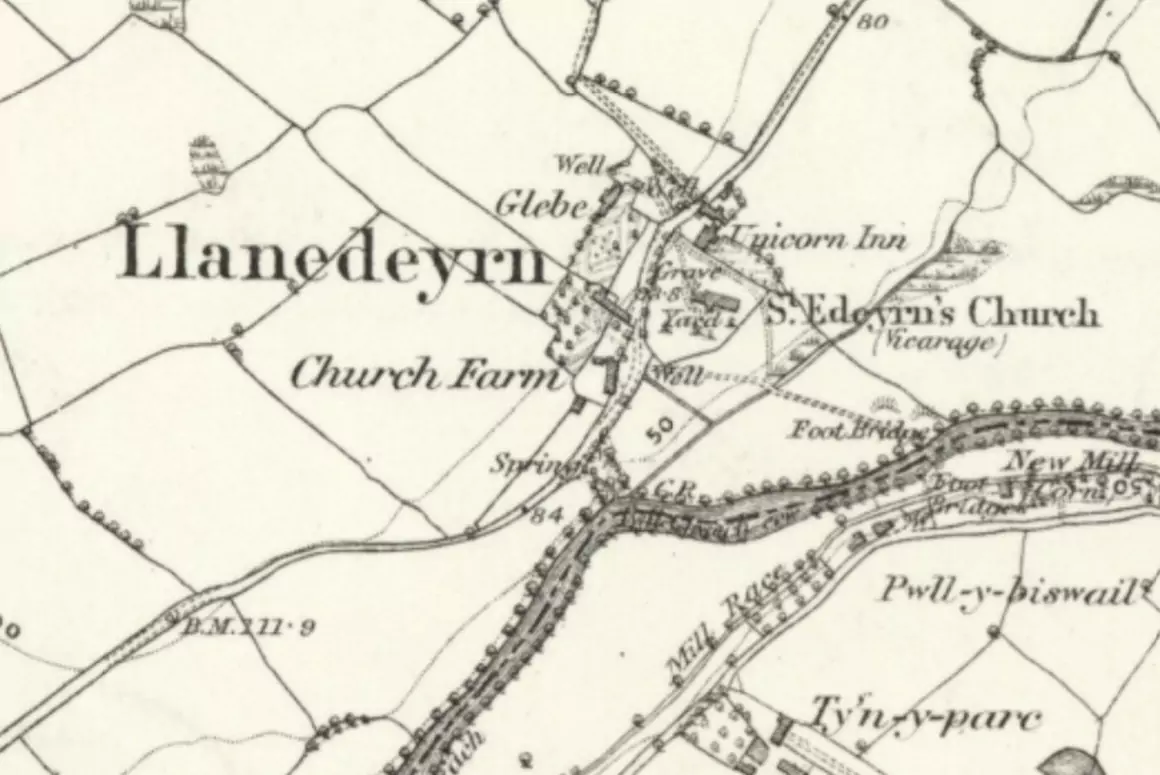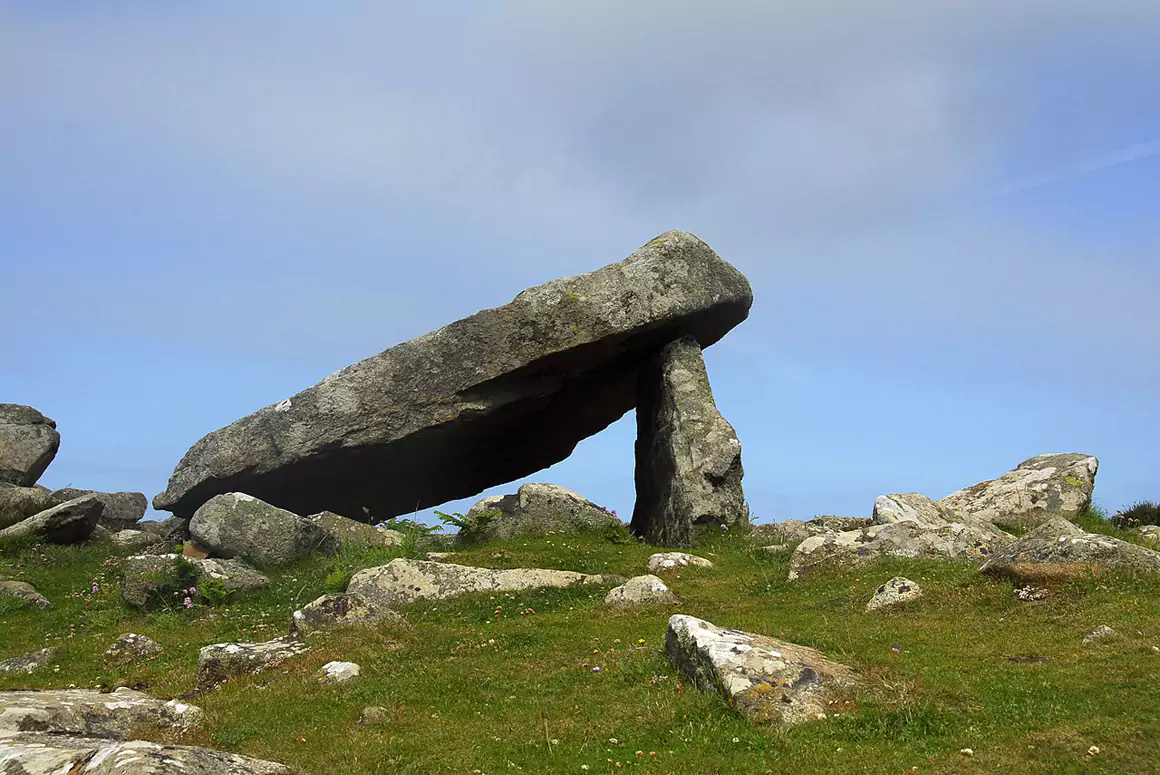![]()
I expect you want to know about Sandscratching; after all, you have an enquiring mind.
Well today we call it sand sculpture and it is far more impressive and technological, rather like those men who sit in the middle of a shopping precinct impeding pedestrians by the side of a model of a cute dog moulded from sand and silicone, stroking it with a thin artisan trowel, pretending they have just knocked it up. Of course they have. There is no possible way in which it was delivered in a truck…
Earning money from rearranging sand has a longer history than you might imagine, though in the past it was generally seasonal employment, indeed often positively tidal, which is why these stories occur in the summer.
Our first Sand Artist is John Lynch, who was in court in Rhyl in 1905 on a charge of being drunk and disorderly. A constable had been called to the Queen’s Arcade where he was causing a disturbance but Lynch wouldn’t listen to sense and he had to be locked up. In court, overhung and contrite, his background emerged. He was from Manchester and had served in the South Lancashire Regiment in India and South Africa. The police confirmed that he was one of a number who had been drawing pictures in the sands. The magistrate had never heard of it before and was bemused. He questioned whether he had any right to do that sort of thing as a means of earning a living? Perhaps Lynch, an ex-serviceman, had just run out of options. With tears in his eyes, Lynch pleaded for leniency, and was let off on payment of 6s 4d costs.

Society has never been very sure what to do with ex-servicemen but you might think that he should have received something better than being cast adrift as a sand artist. It seems to have become a fashion amongst old soldiers as we can see in 1907 with both the sculpting and the drinking.
Next we have Edward Dwyer in September 1907, a young man of soldier-like bearing, but showing signs of poverty and drink who was charged with being drunk and disorderly at Colwyn Bay.
He was another ex-soldier, with two medals a pension and a permit to work below the pier on the foreshore as a sand artist. Dwyer was another Lancashire soldier, this time from Stockport. Perhaps like Lynch, he was part of some long-abandoned re-settlement scheme for army personnel.

He admitted having been very drunk, but said he did not cause any bother after the constable had spoken to him. Unfortunately, if I have a little drink it takes effect upon me. I know I’m better without it. The magistrate reminded him that a man who has been in the Army should not disgrace the Army in the way you have done.
He had been in Colwyn Bay for about a month, but he planned to leave the town to go to Rhyl that morning. He pleaded with the Bench to deal leniently with him, as he had a wife and a seven month old baby. If you will let me off I will leave the town at once. The Magistrate accepted his kind offer. We will let you go this time, and advise you to keep away from the drink.
How kind. Sadly though all he did was to pass the problem on to his friends in Rhyl. A year later The Rhyl Record and Advertiser for August 1909 gets very excited about a haircut and our man, Dwyer. He is described as a labourer living at 11 Tynewydd Terrace, Rhyl who appeared in court charged once again with being drunk and disorderly – so drunk in fact that they had to carry him to the police station, so drunk that he had no memory of it.

He knew what had caused it, though. He laid the blame unequivocally upon a haircut, after which he caught cold, which he treated with rum, and not as an embrocation either. And then he had gone out for beer and one drink led to another, as it does.
Despite the fact that he had, he claimed, spent some time both as a soldier and a sailor, and had fought bravely in the South African War it did not take a lot of drink to knock him over. He was still earning his living by sand-scratching which once again confused a magistrate. What is that? He asked.
And again, Dwyer begged for lenience, for he had a wife and (by now) two little children to keep, the recent addition being only five weeks old. My missis is only a young woman, and she can’t do anything without I do it he claimed. He was contradicted by the police inspector. The person he lives with is a young woman, but she is not his wife. She had to be locked up as well for drunkenness, but we have let her out now.
Dwyer was fined 5s and seemed grateful, promising never to do such a thing ever again.
Poor man. Many people hope they have left their names carved upon the rock of history, to be remembered by future generation. Edward Dwyer, like other ex-soldiers it seems, could only write his name on the sand and it was washed away by the tides of history.
Words: Geoff Brookes





